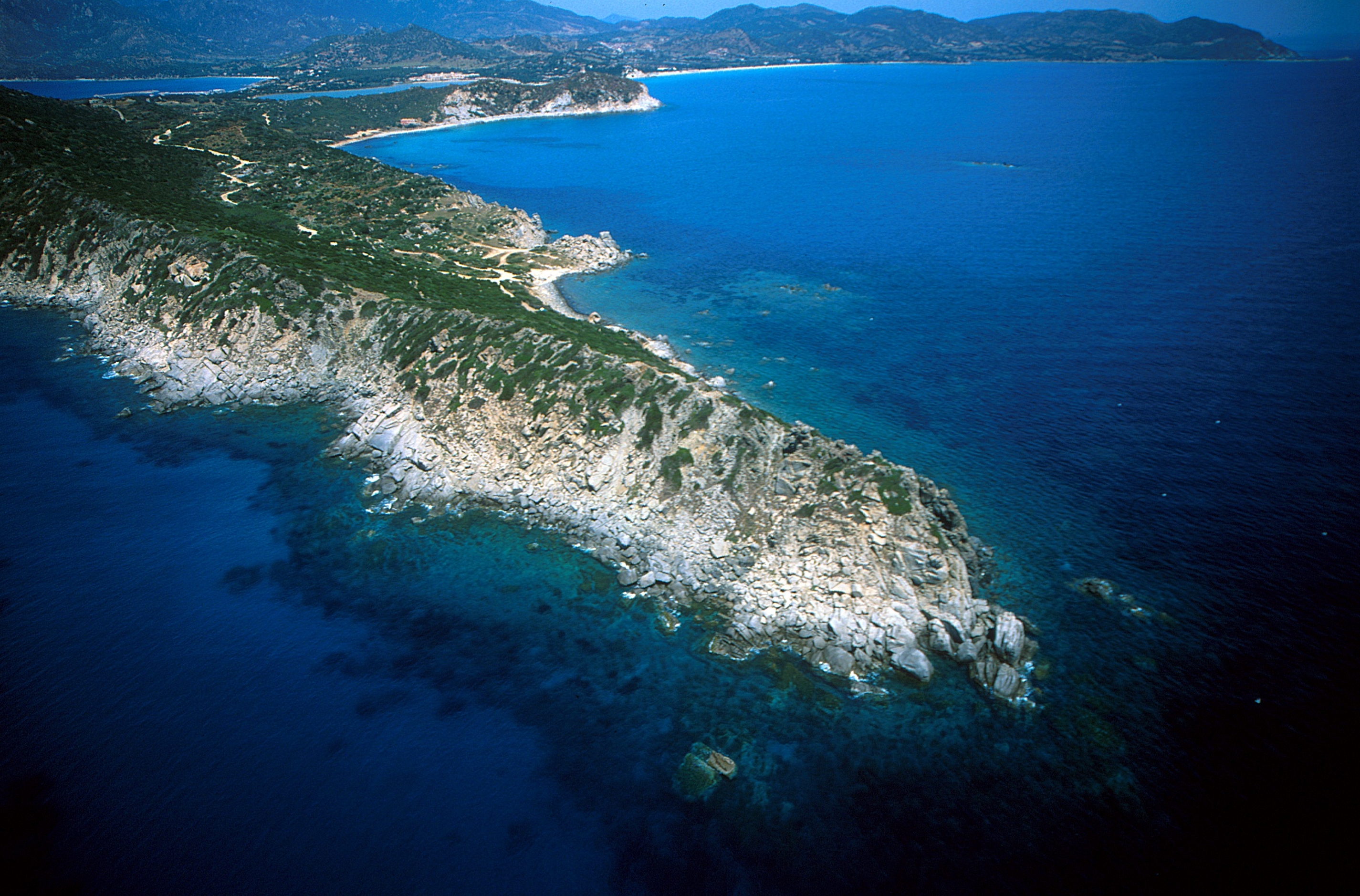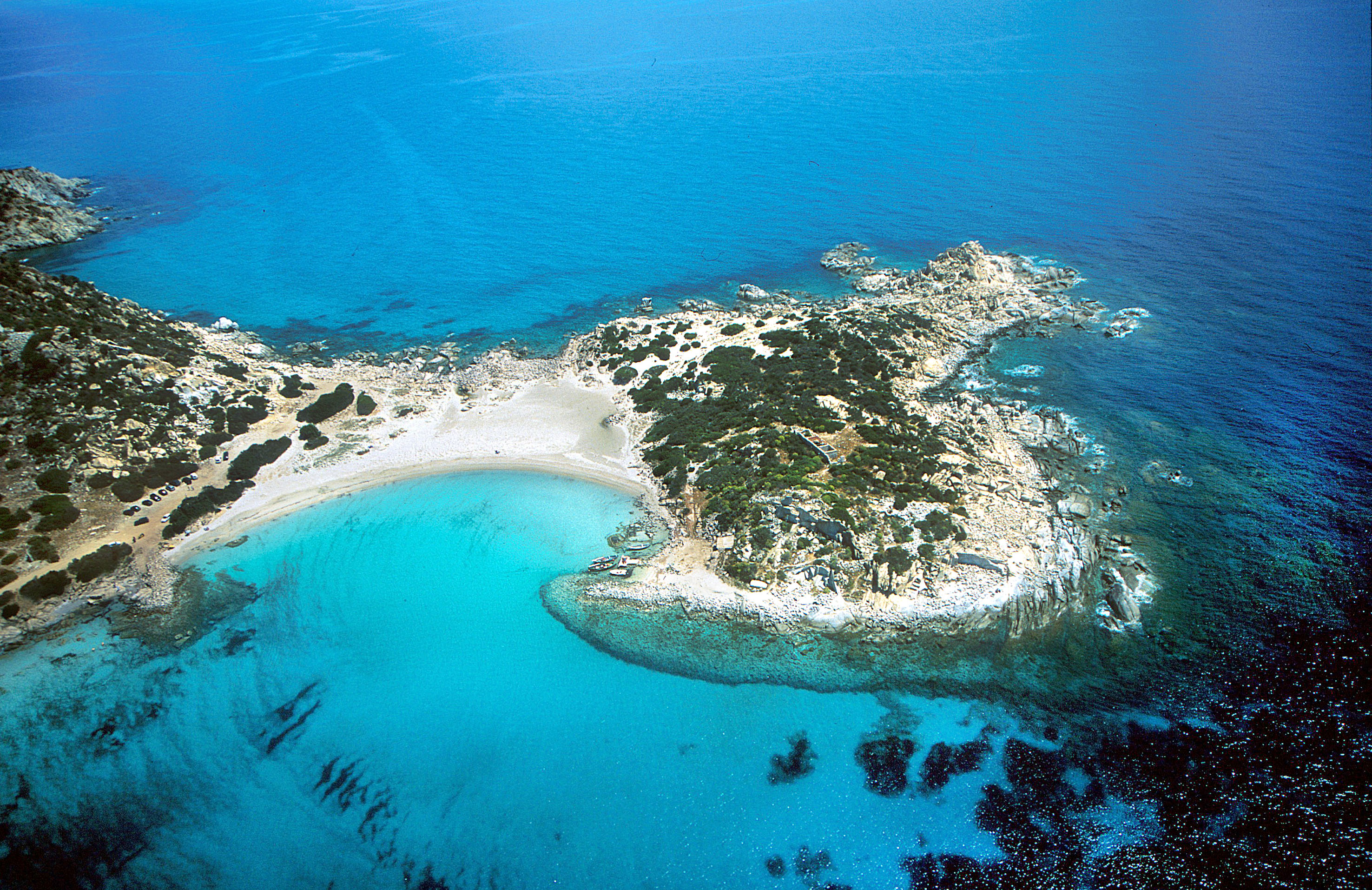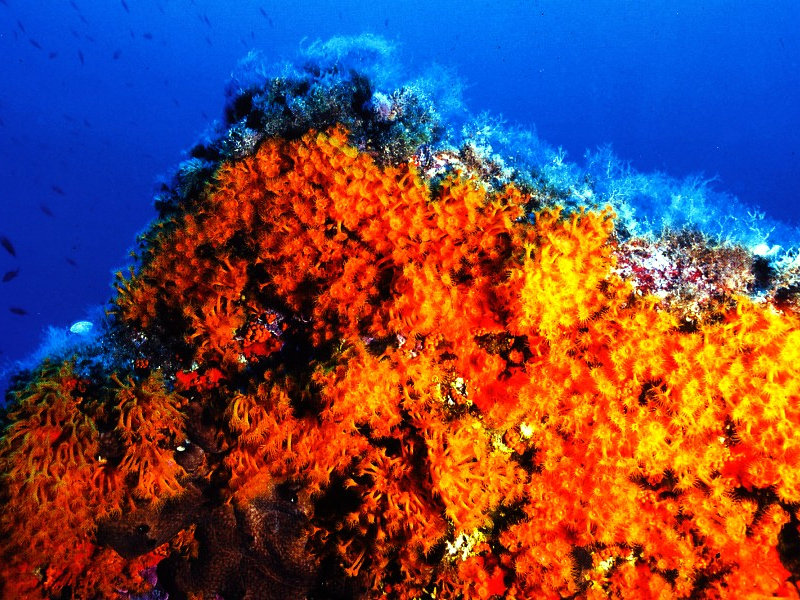
Capo Carbonara Marine Protected Area – Villasimius
This post is also available in:
 Italiano (Italian)
Italiano (Italian)
The Marine Protected Area of Capo Carbonara – Villasimius was established in 1998 to safeguard and enhance the biological and geomorphological resources of this area. The municipality of Carbonara, which became Villasimius in 1862, was originally named after the massive exploitation of the local charcoal deposits; it also used to be a strategic area for controlling maritime traffic, as evidenced by its many medieval watchtowers
FAUNA
The underwater environment features many pinnacles and bastions of granite, as well as hollows and cracks, enlivened by bright yellow cluster anemones (Parazoanthus axinellae) and by deep-red gorgonians (Octocorallia).
The marine area is the ideal habitat for several fish species typical of the Sardinian seas, both from the rocky bottoms and the sandy seabed, such as octopus, shrimps, diplodus, mullets, snappers, amberjacks, gurnards, morays, lobsters, porgies, and corbs.
Near a group of granite rocks called the “Variglioni of Isola dei Cavoli”, live several schools of yellowmouth barracudas (Sphyraena viridensis), while near Cala Caterina shoal, it is possible to admire a wondrous submerged landscape, with large granite landslides inhabited by large groupers and breams. In those waters also live the largest bivalve molluscs in the Mediterranean, known as “the noble pen shell” or fan mussel (Pinna Nobilis).
As far as the terrestrial fauna is concerned, especially near Stagno di Notteri (“Pond of Notteri”) and in the ravines of Isola dei Cavoli, there are peregrine falcons, European shags, Marmora’s warblers, red-backed shrikes, terns and pink flamingos.
FLORA
There are about 136 plant varieties. In the coastal area, there is the typical Mediterranean scrub, with the plants well-adapted to dry seasons such as the cade juniper (Juniperus oxycedrus) and myrtle (Myrtus communis).
The underwater flora around Serpentara Island, in Berni and Cala Caterina shoals, is mainly made of lush meadows of Neptune grass (Posidonia oceanica), a very important plant for seawater re-oxygenation.
This post is also available in:
 Italiano (Italian)
Italiano (Italian)
Contatti
Via Roma, 60 - Villasimius(CA)
070 790234
info@ampcapocarbonara.it



